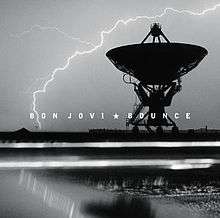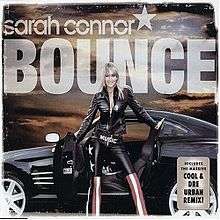
Onyx
Onyx is a banded variety of the oxide mineral chalcedony. Agate and onyx are both varieties of layered chalcedony that differ only in the form of the bands: agate has curved bands and onyx has parallel bands. The colors of its bands range from white to almost every color (save some shades, such as purple or blue). Commonly, specimens of onyx contain bands of black and/or white.
Etymology
Onyx comes through Latin (of the same spelling), from the Greek ὄνυξ, meaning "claw" or "fingernail". With its fleshtone color, onyx can be said to resemble a fingernail. The English word "nail" is cognate with the Greek word.
Varieties
Onyx is formed of bands of chalcedony in alternating colors. It is cryptocrystalline, consisting of fine intergrowths of the silica minerals quartz and moganite. Its bands are parallel to one another, as opposed to the more chaotic banding that often occurs in agates.
Sardonyx is a variant in which the colored bands are sard (shades of red) rather than black. Black onyx is perhaps the most famous variety, but is not as common as onyx with colored bands. Artificial treatments have been used since ancient times to produce both the black color in "black onyx" and the reds and yellows in sardonyx. Most "black onyx" on the market is artificially colored.

Onyx (Pop Evil album)
Onyx is a rock opera and the fourth studio album by Pop Evil. It was released on May 14, 2013. The first single, "Trenches", was released February 28, 2013. The album was available for streaming a day before its official release date. It was produced by Johnny K, mixed by Jay Ruston, and mastered by Paul Logus. Additional vocal production was performed by Dave Bassett. Additional programming was done by Bassett and Matt Doughtery.
The album debuted on the Billboard 200 at No. 39, No. 9 on the Independent Albums chart, with 10,000 copies sold in its first week. It has sold 122,000 copies in the United States as of July 2015.
Track listing
Charts
Album
Singles
Band
References
External links

USS Onyx (PYc-5)
USS Onyx (PYc-5), was a diesel coastal patrol yacht of the United States Navy during World War II.
The ship was built in 1924 as Janey III by Consolidated Shipbuilding Corp. of Morris Heights, New York, and was subsequently renamed Rene and Pegasus.
Purchased by the Navy on 3 December 1940 from Clifford C. Hemphill, of New York City, converted to Navy use and named Onyx, she was classified as a coastal yacht on 13 December 1940, and commissioned on 27 February 1941.
Service history
After conversion she departed New York for Norfolk, arriving on 22 March. Sailing again, she reached New Orleans on 5 April to report for duty to Commandant 8th Naval District. Onyx performed services for ComEight as a coastal patrol vessel around the Gulf area until January 1942. On 22 January she departed Key West, Florida to return to New York and arrived there on 31 January.
Onyx was again ordered to report to the 8th Naval District at New Orleans and was underway by 13 March, arriving on 27 March. She resumed services and continued in this capacity until February 1944 when she was extensively damaged in a collision. Beyond economic repair, her ordnance was removed and she was placed out of commission, in service, retaining her name and designation, on 15 May 1944. She was designated a target vessel on 31 May, the same year, and made available for disposition on 31 October.

Bounce (Bon Jovi album)
Bounce is the eighth studio album by American rock band Bon Jovi, released on October 8, 2002 through Island Records. Produced by Luke Ebbin, Jon Bon Jovi and Richie Sambora, the album was recorded at Sanctuary II Studio in New Jersey.
Bounce was heavily influenced by the September 11, 2001 terrorist attacks, owing in part to Jon Bon Jovi's proximity to New York. The title "Bounce" was a reference to New York City's and the United States' ability to bounce back from the World Trade Center attacks as a nation. The cover image for the album includes a stylized image of a radio telescope dish at the Very Large Array.
The album debuted at #2 on the Billboard 200, making it Bon Jovi's highest debut in the band's history at that time.
Background
At the end of July 2001, the band were finishing the One Wild Night Tour. After taking only three weeks off after the tour, the writing process began in Los Angeles. Shortly thereafter, Jon Bon Jovi and Richie Sambora were back in New Jersey and by September 11, they were well into the writing process, which lasted into May 2002.

Aaron's Party (Come Get It)
Aaron's Party (Come Get It) is American pop singer Aaron Carter's second studio album serving as the follow-up to his international debut album. This album was released in the fall of 2000 becoming the first album under Jive Records. This album was also certified 3× Platinum by the RIAA for selling over 3 million copies in the United States making it Aaron's most successful album. The lead single "Aaron's Party (Come Get It)" was featured on the 2000 compilation album Now That's What I Call Music! 5.
Track listing

Bounce (Sarah Connor song)
"Bounce" is a song by German recording artist Sarah Connor, taken from her second studio album, Unbelievable (2002). Written by Bülent Aris, Toni Cottura, and Anthony Freeman, with production helmed by the former, the uptempo pop song samples Mary J. Blige's 2001 song "Family Affair", while featuring guest vocals by Wyclef Jean. "Bounce" was originally released as the album's fourth and final single in Central Europe on 21 July 2003, amid Connor's first pregnancy. It reached the top twenty in Austria, Germany, Switzerland, and Walloon Region of Belgium.
In winter 2003 radio programmers Tod Tucker and Matt "the bratt" Derrick at 106.9 K-HITS in Tulsa, Oklahoma took hold of a copy of the single and began to give it airplay. Due to large amounts of airplay in the United States, the song reached number eleven on Billboard's Top 40 Mainstream and number twenty-one on Top 40 Tracks charts, eventually charting on the Billboard Hot 100 at number fifty-four. "Bounce" was officially given a physical US release on 4 May 2004, serving as Connor's debut single there. It was also released in Australia and the United Kingdom, where it reached number 14 on both charts. The radio version of the song was featured on the 2004 compilation album Now That's What I Call Music! 15.
Podcasts:

